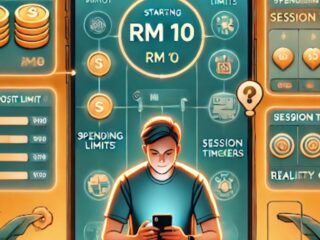
A common misconception about AI is that it has the same cognitive capabilities and capacities as humans. Many people believe that AI can outsmart humans in video games and real life, but in reality, AI still has a long way to go before it can be compared to human intelligence.
Additionally, there is also a belief that AI can be used to make meaningful and useful decisions without any human input. In this article, we will discuss these misunderstandings and look at the reality of AI.
AI learns to outsmart humans in video games – and real life
AI stands for Artificial Intelligence, and while it is true that it has the potential to display intelligence similar to that of humans, there are some important differences when compared to biological intelligence. AI is based on rigorous analysis in fields such as mathematics, computer science, engineering and linguistics, while human intelligence has social, psychological and spiritual aspects as well. AI can also draw on data from its environment and analyze it in ways humans cannot.
AI can solve specific problems by identifying patterns or making correlations between data points in a way that may not be obvious to humans. An AI system does not possess human traits such as emotion or creativity – it results from computer programming and deep learning algorithms. AI systems are efficient at carrying out repetitive tasks with low error rates. Still, they cannot generate original ideas or solve complex problems with minimal guidance from a human operator.
In short, while AI systems can appear “human-like” in their ability to analyse data and provide solutions based on said analysis, they lack the complexity of actual human-like intelligence found throughout humanity’s philosophies and literature; hence why they are referred to as “artificial” rather than imitating “true” human intellects.
AI can be programmed to mimic human behavior
One of the most common misconceptions about AI is that it can be programmed to do anything, including completely mimicking human behavior. This is not necessarily true, as AI systems are limited by the complexity of the programming that defines them. Machine learning algorithms exist, but these approaches rely on how much data an AI system can access and how accurately it can interpret said data. Machines are far behind humans in recognizing, understanding and interpreting natural language.
Moreover, even when machines appear to be exhibiting human-like behavior they are simply following preprogrammed rules. This means that they do not necessarily have any deeper understanding or knowledge base beyond what they have been programmed to do; they simply execute actions depending upon certain set criteria based on their programming. An example might be a chatbot that responds with small talk in a very human-like manner;. At the same time, it may appear to have some level of intelligence, beyond the basic programming parameters it does not necessarily ‘know’ anything else or think for itself in any real way.
Furthermore, even though AI is advancing at a rapid pace, it still lacks intuition in decision making processes that humans possess; as yet there is no way for an AI system to make ‘spontaneous’ decisions or conclusions based on unstructured data or intuition like humans do – although research into this area does continue and progress is being made!
AI is a Threat to Humanity
The idea that AI will become so powerful that it threatens humanity is a common misconception. While AI can achieve extraordinary feats in video games and other data-driven activities, it still has difficulty performing tasks humans have mastered over centuries of development.
This misconception is further perpetuated by media coverage of AI, often valorizing its successes and ignoring its shortcomings. Let’s look deeper at this topic and explore the truth behind AI and its potential risk to humanity.
AI is not a threat to humanity
Common misconceptions would lead one to believe that AI presents a dire threat to humanity, with an unnatural power that goes beyond our intelligence. In reality, AI is not as powerful, or as independent from humans, as it is often perceived. Rather than being a threat to humanity, the true potential of AI lies in its ability to augment human capabilities and empower people with the tools they need to make smarter decisions faster.
AI-powered solutions can automate mundane tasks such as data gathering and analysis so that people can focus on more complex issues. Furthermore, by leveraging AI for higher-level tasks such as decision-making and optimization, companies can reduce costs significantly and make better decisions faster. As a result, AI can provide invaluable solutions to organizations across multiple industries including healthcare, finance and transportation.
At the same time, there is an increased need for governance when it comes to AI development to ensure fairness and transparency in the usage of this technology. Various bodies such as governments should work together with industry players in creating guidelines on what types of data should be collected for artificial intelligence use and how it should be used responsibly for decision-making purposes. This way, we can move towards ethical AI development that benefits all humankind instead of posing any direct threats or risks.
AI can be used for good
Despite the many fears people have of artificial intelligence (AI) taking over and becoming a threat to humanity, the truth is there are many ways that AI can be used for good. One of the primary benefits of AI is its ability to reduce human labor in industries such as agriculture, transportation, law enforcement and healthcare. By optimizing resources and automating many processes, AI can make life easier for humans by freeing up time for more enjoyable activities such as leisure activities. On top of this, AI can also help provide safety. Through monitoring systems such as autonomous vehicle technology and facial recognition tools, AI can help to prevent crime and accidents while simultaneously helping to bring criminals to justice quicker than ever before.
In addition to security applications, AI is being used in healthcare as well – providing clearer insights into medical data collected by physicians or even helping doctors better diagnose diseases such as cancer. With its ability to enhance research capabilities through data analysis technology, it has been accurately determined that AI may soon play a dominant role in structuring our healthcare system for the betterment of society’s health needs.
Finally, advances in AI have allowed major advances in other areas — from robotics and natural language processing to autonomous vehicles and self-driving cars. It is clear that these advances have improved people’s lives around the world with increased convenience and safety benefits; from automated grocery stores with check-out machines replacing cashiers or self-driving cars reducing traffic fatalities due to human errors. The potential applications of artificial intelligence are vast and show no signs of slowing down anytime soon – making it an invaluable asset when harnessed correctly by humans.
AI is Only Used for Video Games
Artificial Intelligence (AI) is becoming increasingly popular and is used in many different applications. However, one of the biggest misconceptions about AI is that it is only used for video games. In reality, AI is used to improve many aspects of our lives, from medical diagnosis, product recommendations, and even efficient transportation.
Let’s explore the common misconceptions about AI, and look at some of the more unexpected applications of AI.
AI is also used in various industries
It is important to recognize that AI technology is not only used for developing video games and other forms of entertainment. While there are countless examples of how AI can be integrated into gaming, there are numerous other industries that rely heavily on this technology. For instance, AI is used in healthcare to develop digital tools for diagnostics, medical imaging and care coordination. Additionally, AI technologies are increasingly being used in finance and banking to automate processes such as customer service, fraud detection and loan approvals.
Meanwhile, AI can also be applied to more traditional business domains like manufacturing. Advances in robotic process automation (RPA) provide companies with the ability to increase their operational efficiency by automating manual labor-intensive tasks such as production line activities or supply chain analysis. It has also been observed that many businesses benefit from using AI-driven marketing strategies such as natural language processing (NLP), recommendation systems or predictive analytics to gain a better understanding of their customers’ needs and thus improve customer experience.
On a broader level, governments across the globe have been able to use AI solutions for improving access to public services, improving public safety and better managing traffic conditions. As these examples show us, it has become increasingly difficult for many organizations today – whether private sector businesses or government entities – not to leverage the power of Artificial Intelligence technologies given how ubiquitous they have become in modern society today.
AI can be used to solve real-world problems
One of the most common misconceptions about AI is that it is only used for video games. In reality, AI can be used for various applications to solve real-world problems in healthcare, finance and cybersecurity.
AI technologies allow us to solve complex problems quickly and efficiently by analysing large datasets and learning patterns. For example, AI-powered computer vision algorithms can detect diseases in medical images or identify potential credit card fraud in financial transactions. Natural language processing models can automatically read legal documents or comprehend customer analysis. By automating tedious and difficult tasks, AI makes it easier to explore data and find new insights with greater accuracy and speed than ever before.
In addition, AI-driven automation supports increased productivity across different industries, while intelligent assistants help provide customers with faster resolutions to their queries. And data analytics tools enable us to quickly analyse terabytes of data to predict customer behaviour or identify new revenue opportunities. These are just a few examples of how AI can help solve real-world problems effectively and efficiently.
AI Learns to Outsmart Humans
It has been popularized in movies and television that artificial intelligence (AI) will one day outsmart humans and take over the world. This alluring narrative has been with us for centuries and while there have been great strides in the AI field, it is important to be aware of the common misconceptions about AI and how it can, and cannot, be used.
AI does not learn to outsmart humans
Artificial Intelligence (AI) is a form of computer science that enables machines to learn and make decisions independently. While AI has advanced leaps and bounds in recent years, a common misconception is that these machines can outsmart humans. This could not be further from the truth.

AI systems are built around algorithms that enable them to analyze large amounts of data and draw conclusions as well as to automate certain processes such as customer service interactions. However, AI systems cannot think like humans. They simply draw conclusions based on the data they’re given.
In addition, unlike humans, AI systems don’t understand context or values; they cannot recognize nuances or differentiate between complex situations. For example, if you were trying to explain why the sky is blue using an AI system, it would only be able to give you facts about rainbows and refractive light waves – not be able to understand why one might prefer a brilliant blue sky than a grey one on a sunny day.
Another misconception about AI systems is that they may be prone to errors when used incorrectly or without human supervision; however this is just an old myth. In fact, with careful monitoring from humans, these errors can usually be prevented before they occur making them more reliable than if they didn’t have human input!
AI can be used to enhance human capabilities
One of the most common misconceptions about artificial intelligence (AI) is that it is only used to replace humans or increase their productivity. This could not be further from the truth. While AI can be utilized to automate mundane tasks, it is also often used as a powerful tool to augment human abilities. AI can analyze large amounts of data quickly, identify patterns that humans may not detect, anticipate customer needs more accurately, and much more.
AI can be beneficial in many roles including healthcare, financial services, business analytics and even education. In healthcare, AI technologies are now being deployed to support patients by detecting potential issues and offering preventive advice while allowing physicians to focus on treatment plans. In financial services, AI can reduce operational costs by automating processes such as tax filings and fraud detection while still giving account holders personal service when needed.
In business analytics field, AI-based software provides insights into sales performance and customer behavior that can help inform better decision-making for a company’s marketing strategy and product design/pricing decisions. Additionally, companies are using AI techniques in their recruitment process to identify the most qualified candidates for specific positions without relying solely on traditional resumes or cover letters.
Overall, the use of artificial intelligence in the workforce can ultimately result in improved efficiency and quality of life for both employers and employees alike. By implementing these technologies in appropriate ways rather than resorting to fears of automation replacing human workers en masse, employers can leverage AI’s strengths while protecting job security for existing staff rather than replacing them altogether with robots or machines.
AI is Unethical
Artificial Intelligence (AI) is often associated with technology becoming “smarter” than humans. This has been highlighted in recent news stories of AI learning to outsmart humans in video games and even in real life.
However, regarding the ethical implications of AI, some common misconceptions should be addressed. In this article, we will explore the ethical implications of AI and how they are often misinterpreted.
AI is not inherently unethical
Although Artificial Intelligence (AI) technologies can cause ethical challenges, they are not inherently unethical. AI can be used to promote ethical behavior in various ways.
First, AI systems aid decision-making through powerful data analytics and machine learning algorithms. This helps us make better decisions faster and minimizes the scope for bias or errors due to inattentiveness. Such systems also allow for greater transparency when monitoring human performance and behavior in the workplace or elsewhere.
Secondly, AI can be used as a gatekeeper to ensure that ethical principles are enforced within organizations and businesses. For example, decision automation tools help enforce policies such as diversity initiatives throughout any process that involves making decisions about people’s involvement in activities or projects such as recruiting or selecting candidates for roles within a company. This prevents certain groups of people from being excluded or treated unfairly based on race, gender or religion due to biases and prejudices held by individual decision makers or departments within a company.
Finally, using natural language processing technologies offers greater accuracy in understanding customer feedback, which enables companies to respond quickly to complaints while also recognizing areas where customers’ concerns may not have been addressed adequately by existing safeguards. In turn this allows managers and employees to take swift corrective action before serious damage is done concerning the reputation of their organization.
AI has been touted as the technology that will revolutionize our world yet it comes with serious ethical implications – how do we ensure its development follows a responsible path? Individuals and organizations must work together with governments worldwide on developing industry standards and encouraging responsible use of these technologies so that everyone benefits from them, regardless of their background or location.
AI can be used responsibly to improve lives
Despite the headlines and debates about AI, many ethical issues tend to be overblown. It is important to note that Artificial Intelligence (AI) can be used responsibly and ethically to improve a society’s quality of life. AI can automate mundane or dangerous tasks, facilitate faster medical diagnoses, provide more efficient customer service, furnish precise models of environmental situations that would otherwise be impossible for humans to create, and so much more.
Companies must carefully consider their policies before using AI-enabled tools for decision making. Such decisions should be based on transparency, accountability and fairness – account for data bias, assess desired outcomes from a project from all stakeholders without discrimination, evaluate ethical tradeoffs, build trust between employers and employees so they understand how the technology works and set a clear code of conduct about how human behavior is enhanced or hindered by AI systems in place. Organizations should also ensure that any development process is responsible and culturally appropriate; always remember who will benefit most from new tech deployment or applications – employees or even customers or those left out altogether?
Moreover, organizations must remain unbiased when developing AI applications by addressing individual goals about systemic needs and responding quickly while being attentive towards long-term commitments when introducing AI into workplaces in areas such as automation or chatbots. It’s essential that privacy measures to protect against potential misuse are established before deploying an AI system – this includes informational governance which helps determine what data matters most and understanding what pieces of data must remain confidential at all times and which can be shared within an organization protected context.









